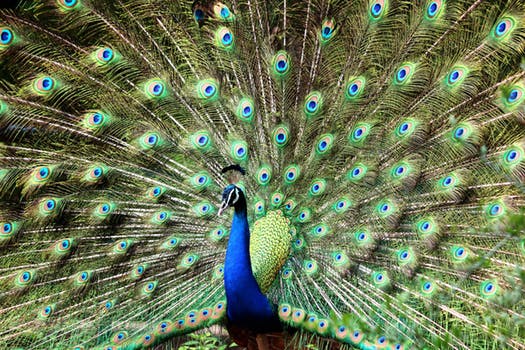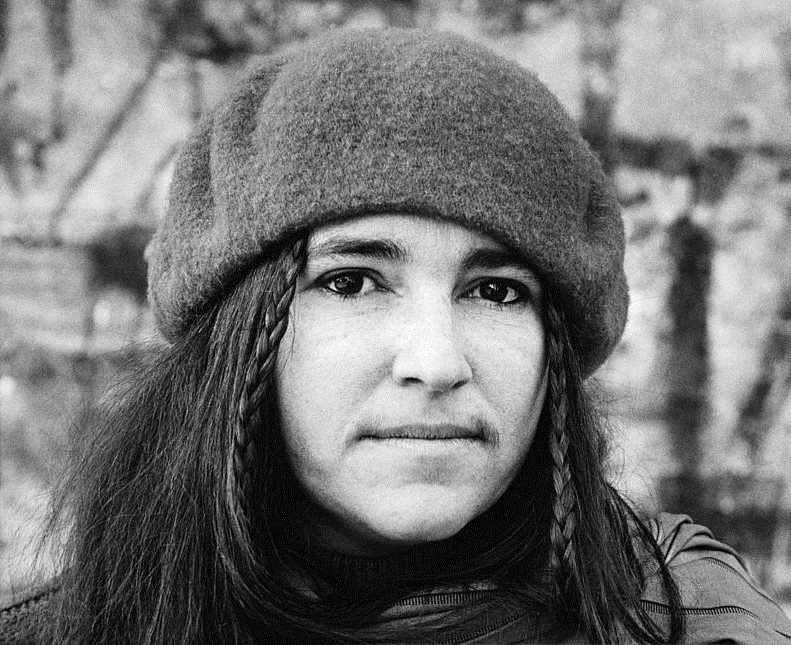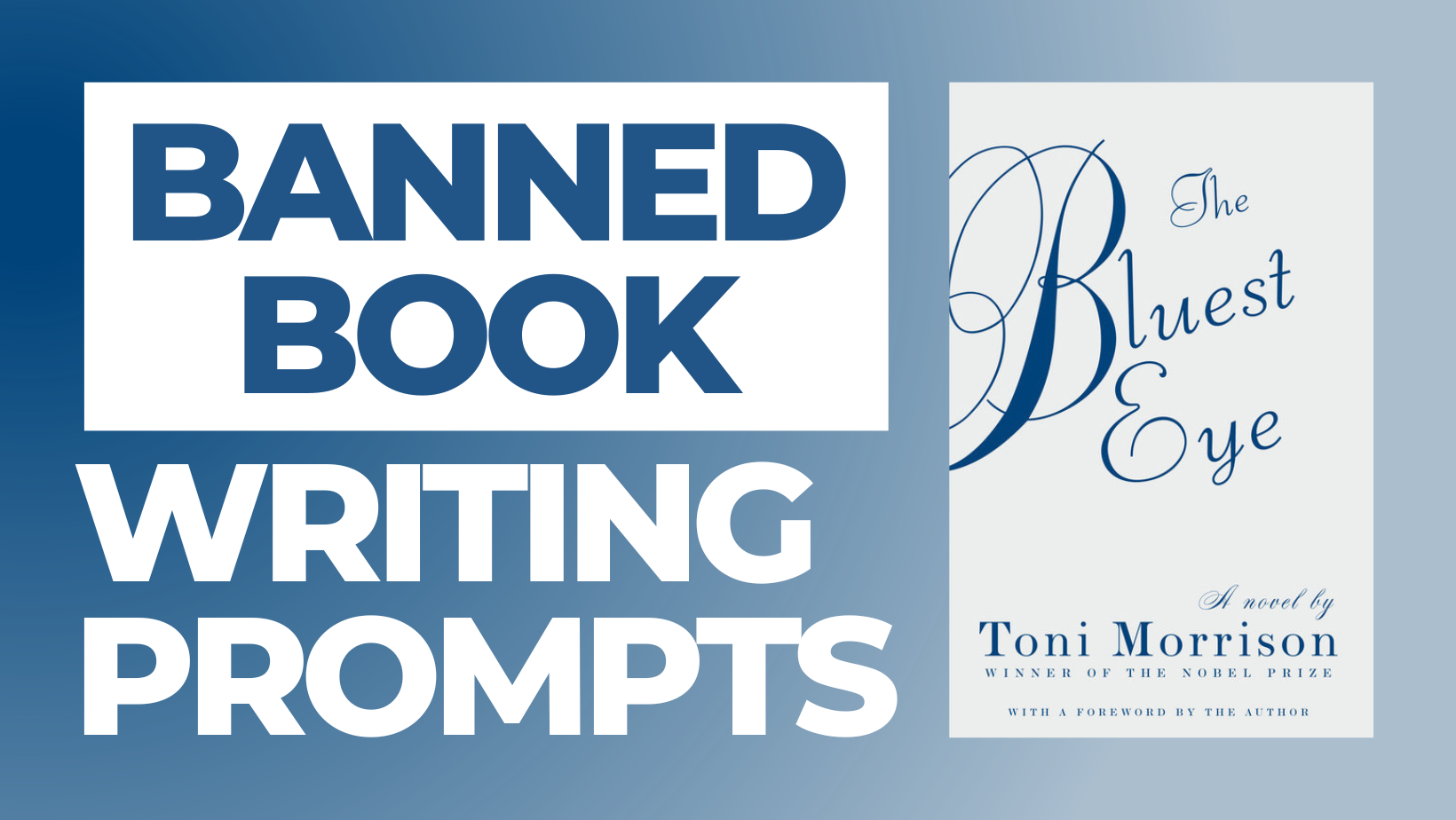When I teach young people to write poetry, I begin by telling them stories. Not stories about writing poetry—what’s the story there, right?—but stories about twelve-legged purple octopi who like to ride unicycles and birds who have one wing but still are able to fly and the time when I was a little boy and I climbed a tree that held up the blue sky.
When I talk to other younger teaching artists about the work that we do, I tell them that you have to be a stand-up comedian, a clown, an entertainer, first, before you can become a teaching writer.
In my head, I carry this line from a song by Nirvana: Here we are now, entertain us.
It doesn’t take all that much to entertain a child. A strange story can sometimes do the trick. Or a plain old cardboard box that holds the promise of something mysterious inside. A painting by Kandinsky or Basquiat can capture attention, or a song where it’s unclear what the singer is saying (Radiohead, Cocteau Twins). The latest thing I’ve taken to pulling out from my bag of teaching artist tricks is a peacock’s feather.
I stand at the front of the classroom and ask, “Who thinks I can balance this feather on one finger for longer than thirty seconds?”
There are skeptics in every class, like the boy who believes that there is nothing in that cardboard box even when I shake it and it makes a sound, for instance, or the girl who looks at a Basquiat painting and says, dismissively so, “I could paint better than that.”
“I’m sure you can,” I like to say. “I wish I could.”
But back to that feather, which I hold up and out in front of me, the eye at its top gazing down.
Before I prove that I can, indeed, balance the feather on one finger for longer than thirty seconds—I’ve gotten quite good at doing just that, in fact—I ask the students to describe this feather that I’m holding.
They tell me about its many colors, they describe its edges as being “ripply” and “raggedy” and others reach out to touch it so that they can say that it’s “soft” and “tickly” or “prickly.”
When I ask “How soft?” one student says that, “It’s as soft as a feather,” not yet fully understanding the idea that, when making similes, the two things being compared should actually be different.
“What else is soft?” I say. “What else is raggedy?”
“Soft like a cloud?” one boy says.
“How do you know that a cloud is soft?” I say, and smile. “Have you ever touched a cloud before?”
When he shakes his head no, the girl sitting in front of him says, “We can use our imaginations to pretend we know what a cloud feels like.”
“Exactly,” I say. Then I say to the boy who said that the feather was as soft as a cloud, “I was just pulling your leg.”
He gives me a funny look. We haven’t gotten around to talking about idioms quite yet.
“I was just kidding,” I explain.
But back to that feather and the words that are already building up around it.
“It’s raggedy like Mr. Pete’s hair,” one boy says and the whole classroom bubbles up with laughter.
“Raggedy like Mr. Pete’s shoes!” says another.
“Ripply like the wrinkles on Mr. Pete’s face!”
More laughter. If the students had tomatoes to throw at my face, I think I might be covered in ketchup.
I rub my hands on my face. “How about tickly like my beard?” I say.
“Or tickly,” says a girl with eyes as big as moons, “as my kitty’s whiskers.”
“Exactly,” I say. “I was just about to say that. I have a cat too. His name’s Mufasa. What’s your kitten called?”
“Milkdud,” she says. And I laugh now too.
“What a cool name!” I say.
Other students get into the action by shouting out the names of their dogs and cats and goldfish.
“Thanks for sharing,” I say after hearing this litany of names. “But let’s get back to business. Raise your hand if you think Mr. Pete can balance this old feather on one finger.”
I’d say that out of twenty-five pairs of hands, two-thirds believe that I can do it.
“I appreciate your optimism,” I tell the two-thirds. And to the other one-third who need to see it to believe it, I let them know that there’s no bad blood between us.
“Do you guys know what I mean,” I ask, “when I say there’s no bad blood.”
No one says a word. “It means,” I tell them, “that no matter what you do or don’t believe it’s all good with Mr. Pete. We all have our own opinions.”
“You’re funny, Mr. Pete,” one girl tells me. Funny, I think, like a clown doing stand-up.
I stick the feather on top of my head.
“I’ll tell you what I can’t do,” I say. “And I’m not afraid to say it. I can’t balance this feather on the top of my head.”
I show them that I can’t. That it’s okay to fail sometimes.
“Who here thinks they can balance this feather on one finger?” I ask.
I get many hands raised and waving, pick me, pick me, and call up a student who I know won’t give up even if at first he fails and the feather falls silently to the classroom’s floor.
“How about we see if you can balance this feather for like ten seconds,” I say. “I’m about ten times older than you,”—which isn’t exactly true, I am stretching the truth here, a kind of hyperbole, which they’ve learned about too—“so if you can balance the feather for ten seconds that’s about the same as me being able to balance it for at least thirty seconds.”
He holds out his hand. I hold out the feather to the tip of his pointer finger and I tell him on the count of one, two, three, I’ll be letting the feather go.
When I let go, the feather leans to the left and, after less than two seconds, lands softly on the old hardwood floor.
“Try again,” I say, and I pick the feather up and put it back on this boy’s hand.
Once again, the feather has a mind of its own.
“Let me teach you,” I say, though he is not so discouraged that he wants to return back to his seat. In my book, too much time is already spent with these kids just sitting in their seats.
“I want you to watch me,” I say, “as I balance this feather on one finger. I think if I show you,” I tell him, “and if you pay attention to me doing what I say I’m going to do, then you’ll see how it’s done. Sound good?”
“Sounds good,” he says.
I take a deep breath and blow it back out. I gaze up at the feather.
“Look how I’m holding it,” I say.
“Now notice where my eyes are looking,” I say, gazing deep into the feather’s beautiful blue and black eye.
“Pay attention, too,” I say, “to what I am doing with my feet.”
I don’t look down. Why would I? I know where my feet are.
I blow out another deep breath.
“Someone be the person who watches the clock,” I say. “Teanna, you be our counter. Tell me when I get to thirty.”
I don’t look away from the feather. “You ready, Teanna.” I do not look at Teanna.
“Ready,” Teanna says.
“One the count of one,” I say, “two,” I breathe out. “Three.”
I let go of my left hand and lift up with my right so that the feather catches air.
When it begins to lean, as it is prone to do, I move my hand even higher. My feet, too, I move with them, left or right, whenever I have to, in order to keep the feather held, balanced, aloft.
“How am I doing?” I ask Teanna. “How much longer?”
“You’re at twenty,” I hear her say. I say back, “Ten seconds more.”
One boy up front begins to count down from ten. “Ten, nine, eight, seven….”
When he gets to one he announces, “Blast off!” as if I am holding not a feather but a rocket ship born to orbit through the stars. I flick the feather high into the air.
I catch it before it falls and look away from the feather for the first time in over a minute. I smile back at them big.
“You did it, Mr. Pete!”
“I did it,” I say. “Now tell me,” I add, “what did you notice about how I did what I did?”
They look back at me as if they need me to say more, so I say more to get them to see: to get them make the connection between paying attention and understanding how a thing, like balancing a feather, gets done.
“Where were my eyes?” I ask.
“In your head,” one boy says.
I give him a head-tilted look.
“What were my eyes focused on,” I say, “as I balanced the feather on one finger?”
“The feather,” they say.
They see what I mean now.
The feather. One finger. Focus. Breathe.
“That’s right,” I say.
One student adds this important detail: “You were looking up at the top of the feather.”
“The eye,” I say. I give him the nod.
“That’s not an eye,” someone else says. Possibly one voice from the one-third of disbelievers.
“It’s not a real eye,” says someone else, quick to my defense, someone who believed, I am sure, that I could and would, in fact, balance the feather on one finger.
“It just sort of looks like an eye,” I say. “Right?”
I get lots of “Right”s.
“What about what I did with my hand? What about what I did with my feet?”
“You moved them.”
“When did I move them?”
“You moved them when the feather started to lean to one side.”
“Did I move fast like I was running in a race?”
“No, you moved slow.”
“Slow like what?”
“Slow like snow,” says someone. “Slow like a snake,” says another. “Slow like the leaves in the tree.”
“Nice,” I say. “Thank you.”
One by one, I invite the students up to the front of the class to give it their best shot. Ten seconds. A slow dance, like leaves in the trees, with a feather.
It’s not always about the writing, right?
When I leave, after everyone’s had a chance to balance the feather on one finger, I leave with my feather sticking out from my back pocket.
Until next time is what I’m already thinking.
“Mr. Pete, you look like a bird,” one boy calls out.
“I wish I were,” I say. And I flap my arms as if they were wings.
***
A week later I’m back with my feather. But this time it’s time to write about it, or write through it.
I begin by talking to them about the feather’s eye. We know it’s not a real eye, but what if it were? What might we see if we looked through it? Would we see things that only this eye could see?
These are the kinds of questions I like to ask. These are the kinds of possibilities that I like to offer to my students.
Maybe the eye of the feather is a kind of dream eye not unlike the eye that allows us to see our dreams at night.
Maybe looking through the eye of the feather will be like looking through a telescope that makes things far away in space appear close. Or maybe it’ll be like looking through a microscope that allows us to see very small things up close.
Here are some poems born out of this kind of looking, out of this kind of teaching, a looking (and teaching) that can only take place when students are invited to engage with a thing (i.e. a feather) as an object that is more than itself. Yes, it’s a feather and it was once a part of a bird (specifically a peacock) and feathers are pretty and soft and hollow-stemmed and they allow birds to be able to fly, but they can also be used to teach students about things like focus and paying attention and believing that a feather can be balanced on one finger and that the colorful design at its top might be an eye, or like an eye, for us to look through. We might even get students to see and hear and think and feel their way into their world through the silence and the power and the possibility of something as simple (and simply beautiful) as a feather. Who knows, it’s possible, too, I believe, that the feather might even become, or be transformed into a feather that can walk and talk, dance and sing.
What I See Through the Eye of a Feather
by TeannaWhen the feather sings
it is singing to me. In the feather’s song
I believe that the feather can
see right through me. I think
the song is about me.When the feather walks
the feather is shining. When the feather
is shining, the feather walks
through me and I can see
a path for me to follow my dream.When the feather looks
it is sitting down on a pine cone.
When I look at the feather
the feather is looking at me.
I can see the feather happy inside.
Through the Eye of the Feather
by NavaehI can see my beautiful grandmother.
I can smell the perfume she used to wear
that stands as her scent. I can hear
her raspy voice, can feel her wrinkly hand.
I don’t know how to feel anymore
without my grandma.
Through the Eye of the Feather
by ArtezI can see my dead uncle.
I can hear a pencil writing.
I believe I will heal and walk.I can touch my future self.
When the feather speaks it says
get out of bed.When the feather sings it brings
joy into my life.
Through the Eye of the Feather
by LarryThe feather walks beyond the sky.
The feather dreams about floating in the blue sky..The feather knows what it’s thinking.
The feather speaks to its father.The feather sings like the birds in the morning.
The feather looks for its family.The feather can hear what I can hear.
I think like the feather’s father.I know what the feather feels.
I feel the feather’s darkness.
Through the Eyes of the Feather
by AngelaI see the darkness.
I can hear a low voice singing.
I can smell the sea.
When the feather sings I cry.
Through the Eye of the Feather
by ShardaviaI can see the sky turning dark blue.
I can hear a little girl crying for her mother.When the feather speaks
it says help the little girl.
The feather knows the little girl needs help.When the feather dreams it likes to save the girl.
The feather goes to find her.The feather sings, Come home.
Your parents miss you.
Your little sister is crying.
They are wishing she will come home
for them to see her one
more time.
Through the Eye of t he Feather
by AmarionI can see the boy running.
I can hear the boy talking to me.
I can see the feather.The feather talks to me.
The feather eats ice cream.
The feather sees me crying.The feather can go to sleep.
The feather can jump on the bed.
It is a feather looking for love.It is a heart looking for a home.
My feather is my love.
I can touch my feather.
Through the Eye of a Feather
by TravonI can see dreams
I can hear giggles and music
I taste fresh airThrough the eye of the feather
I see the future coming soon
Through the eye of the feather
I see ocean waves interactingThe feather is running for its life
The feather is standing up for what
it believes in which is that one day
it will jump off the wing of a bird
and glide down from above
Photo Credit: Pexals
Peter Markus is the senior writer with InsideOut Literary Arts Project of Detroit, where he has worked as a writer in the public schools for the past 20 years. In those 20 years, he has also published six books of fiction, the most recent of which is The Fish and the Not Fish. He also edited, with InsideOut founder Terry Blackhawk, To Light a Fire: 20 Years with the InsideOut Literary Arts Project, published in 2015 by Wayne State University Press.



